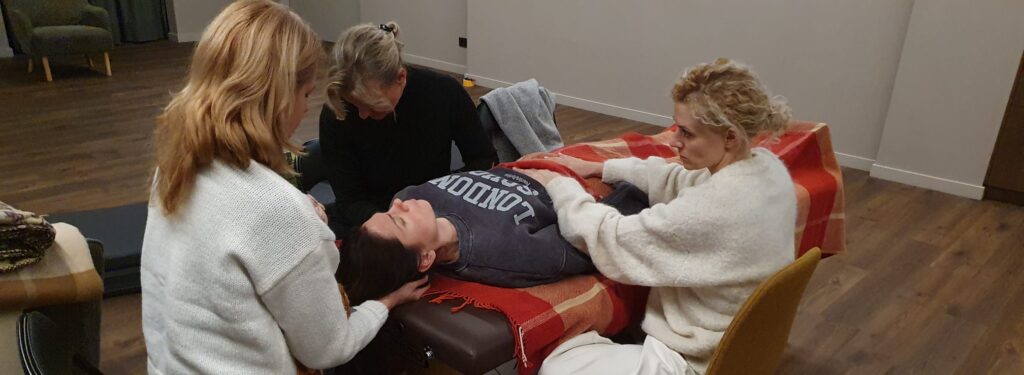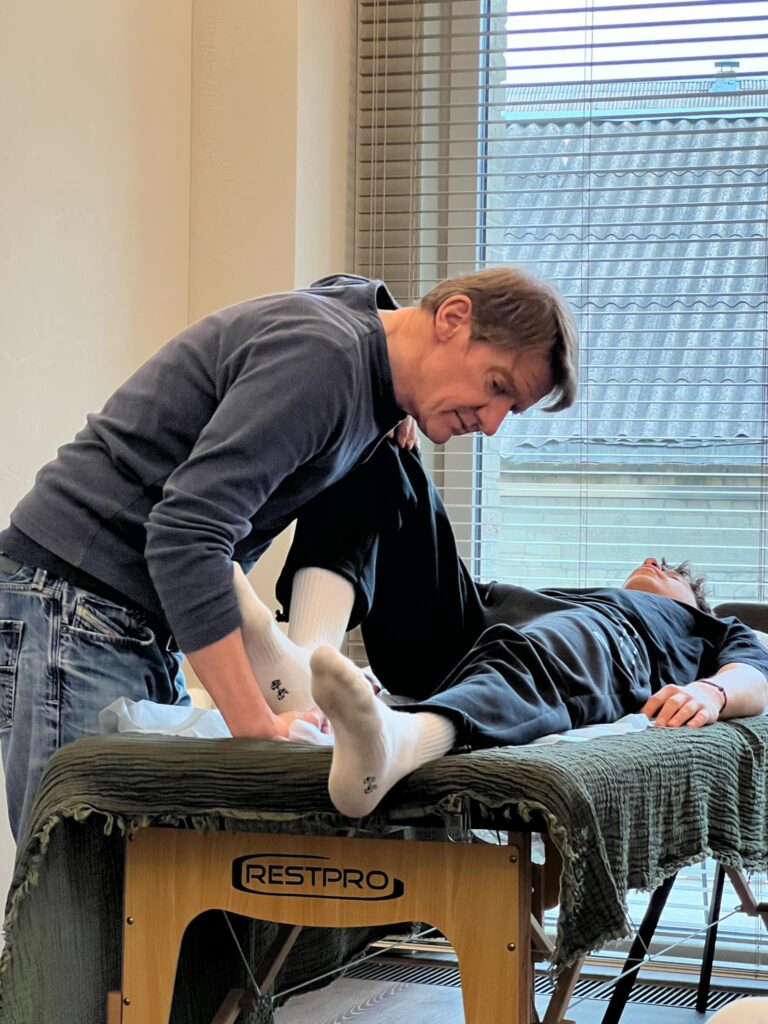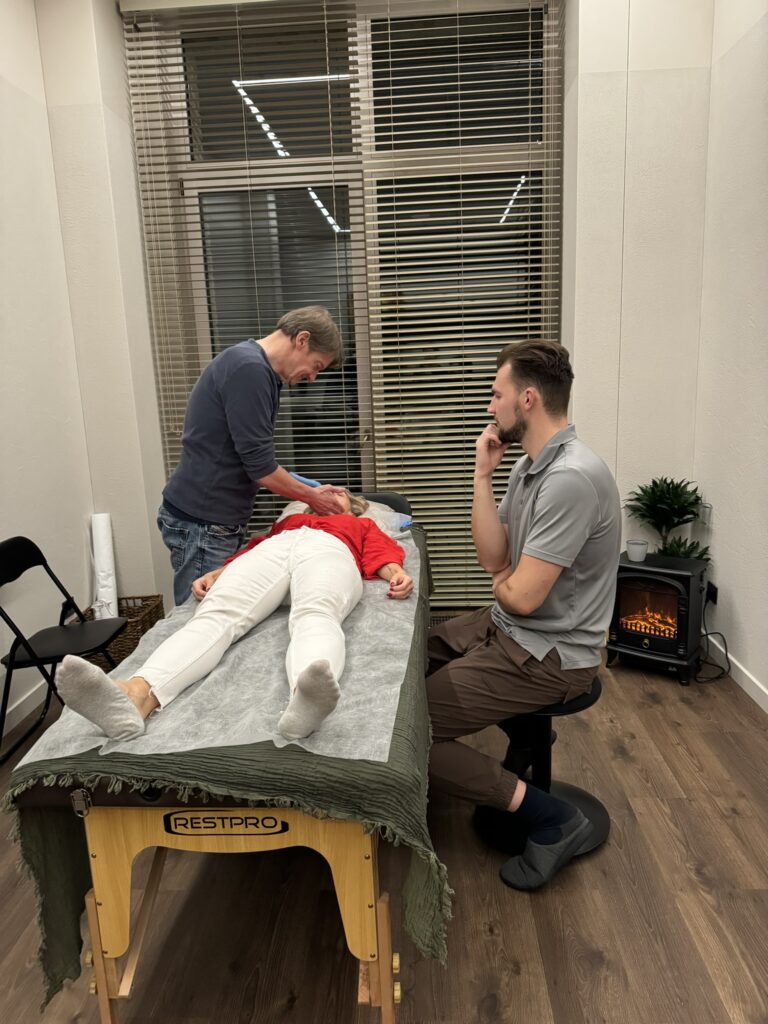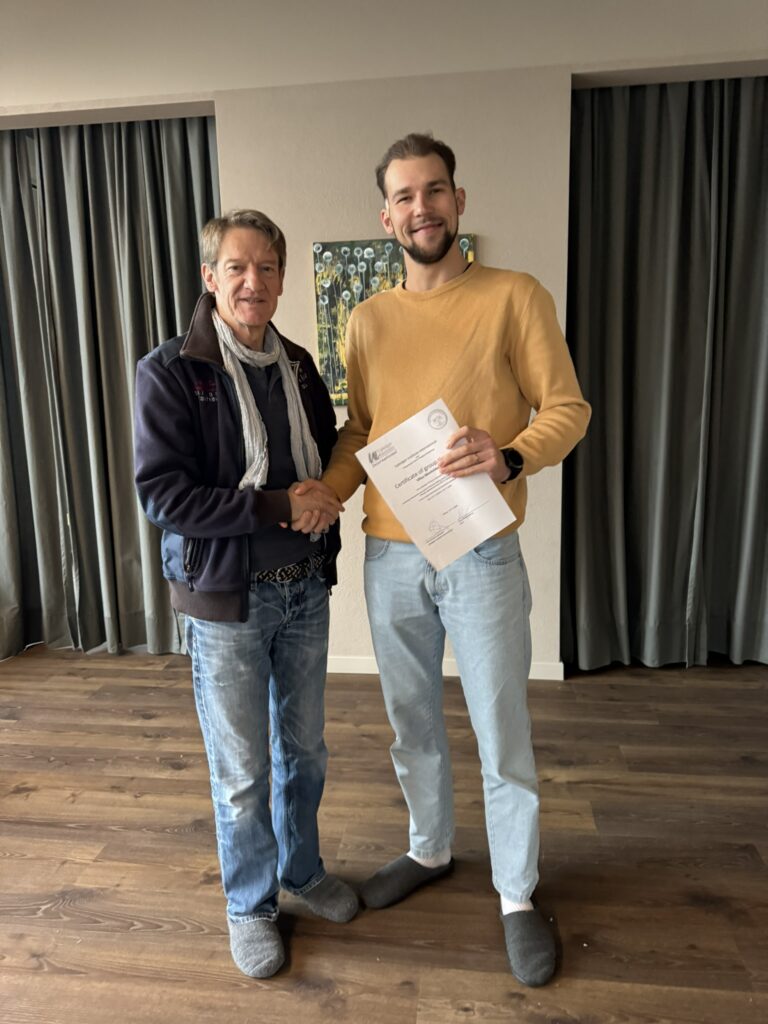
“The secret something that is shared by all effective healing methods is the process of leading the patient to an honest and truthful self-discovery. This self-discovery is required for the inititation and continuation of self-healing; for it is only through self-healing – in contrast to curing – that patients can
experience both permanent recovery and spiritual growth… the closer our perception of self approaches, the deeper our capacity for self healing becomes. When there is a very close correspondance between self image and truth, our healing powers may be virtually unlimited.“
-Dr. John E. Upledger
What is Craniosacral Therapy?
The name comes from two Latin words meaning skull (Latin “cranium”) and sacrum (Latin “sacrum”).
The essence of craniosacral therapy was perfectly described by J. Upledger: “the common secret of all effective treatment methods is that the patient is guided toward an honest and true self-discovery. This self-discovery is necessary to begin and continue the self-healing process, because only through self-healing – as opposed to treatment – can patients experience both permanent recovery and spiritual growth… The closer our self-perception becomes, the deeper our self-healing ability becomes. When there is a very close correspondence between self-image and truth, our healing powers may be virtually unlimited.”
A bit of history: During a cervical vertebra operation, Dr. John Upledger noticed that the brain lining was moving rhythmically up and down. This fact fascinated him. Between 1975-1983 at the University of Michigan, Dr. Upledger, together with a team of anatomists, psychologists, biophysicists and biotechnicians, conducted research to prove the existence of the craniosacral system and its influence on the human body. This team confirmed the movement of skull bones and precisely measured the frequency and amplitude of this movement. Participating in joint scientific research, John E. Upledger, together with biophysicist Dr. Zvi Karni, discovered that the body often stores “emotional memories.” Seeking to disseminate his methods, Dr. E. Upledger founded the Upledger Institute in 1985.
Craniosacral therapy (CST) is a gentle hands-on method for evaluating and improving the functioning of a physiological body system called the craniosacral system, which consists of the membranes and cerebrospinal fluid that surround and protect the brain and spinal cord. Using gentle touches, usually no more than 5 grams or about the weight of a nickel, practitioners release restrictions in the craniosacral system, which has been shown to improve the functioning of the central nervous system and many other body systems, such as digestive, musculoskeletal, respiratory, circulatory and others. It has also been proven that CST helps overcome physical components associated with somatic conditions such as post-traumatic stress, depression and anxiety.
CST is not a method where the therapist is an all-knowing doctor. It is maximally a state of surrender to the patient’s inner wisdom. To achieve such surrender, each therapist must first lie on the couch themselves, even better to do it again and again – because this requires great personal maturity, maturity that includes gratitude, humility and openness.
CST is an integral part of Osteopathy.
When Can Craniosacral Therapy Help?
Craniosacral therapy (CST) is increasingly used as a preventive health measure because it helps strengthen the body’s resistance to disease. This therapy stimulates the body’s natural healing processes and contributes to restoring its balance. It has been proven that CST can be beneficial for people seeking help with various health problems, such as:
- Chronic fatigue
- Immune system disorders
- Post-traumatic stress disorder
- Postoperative disorders
- Sleep disorders
- Migraine, headache
- Chronic pain
- Movement coordination disorders
- Central nervous system disorders
- Orthopedic problems
- Brain injuries and concussions
- Alzheimer’s disease
- Spinal cord injuries
- Scoliosis
- Conception, pregnancy, childbirth
- Pediatric challenges
- Learning differences, ADD, ADHD
- Autism and sensory processing
- Emotional difficulties, depression
- Stress and tension-related problems
- Fibromyalgia and other connective tissue disorders
- Temporomandibular joint syndrome (TMJ) and dental problems
How Does a Craniosacral Therapy Specialist Work?
The treatment session begins with a consultation with the therapist, during which they will ask questions about your health history, complaints and therapy goals. During the session, you will be placed on a massage table or, if needed, seated in a chair. The therapist will ensure your comfort and, before starting work, will explain their actions so you know what is happening.
During therapy, the therapist will gently press with their hands on the head, neck, back (especially around the spine) or other body areas where you experience symptoms. It is common to experience deep relaxation during craniosacral therapy.



Where and How to Learn Craniosacral Therapy Method?
CST is a wonderful tool for all therapists working holistically and integratively. One of the best places to learn this practice is the international Upledger Institute, founded by J. Upledger himself. There’s a chance you’ll learn from instructors who received this method DIRECTLY from its creator! One such instructor teaching in Lithuania is Dutch-born therapist, author and founder of the German Osteopathy Institute Gert Groot Landeweer.
Learning CST follows a clearly and logically structured step-by-step system. The sequence is: CS1 – CS2 – SER1 – SER2 – TID1a – TID1b – ADV1. It’s worth knowing that if you miss one of the courses, you don’t have to wait for the next cycle in Lithuania at our academy. The gap can be filled at any other Upledger institute – in Ireland, Greece, or Italy, just be sure to check the language of instruction (in smaller countries it’s often English). We in turn also accept students and assistants from all over the world, as the training is conducted in English with translation into Lithuanian.
A bit more about the step system and where it leads. Without stepping on the first step, you won’t reach the 7th. So, step by step, in clear sequence, students move toward the essence – toward relaxation, toward That which allows them to calm down. At first there is the academic, structural world, but from SER2 onward one goes deeper. There are fewer rules there, but there are principles. Rules limit us, while principles have the ability to help us. We’re talking about somato-emotional release – the structural and personal parts. And for the learner to approach their personal baggage, they must help relax their structure, although… the personal part sits within the structure! During training, resistance is not fought against – it is respected, worked with. There are reactions and there is neutral empathy. The goal is to become empathetically neutral. This means the learner must recognize their own reactions, not just understand but embody this understanding, that every reaction is individual, arising from personal biography.


